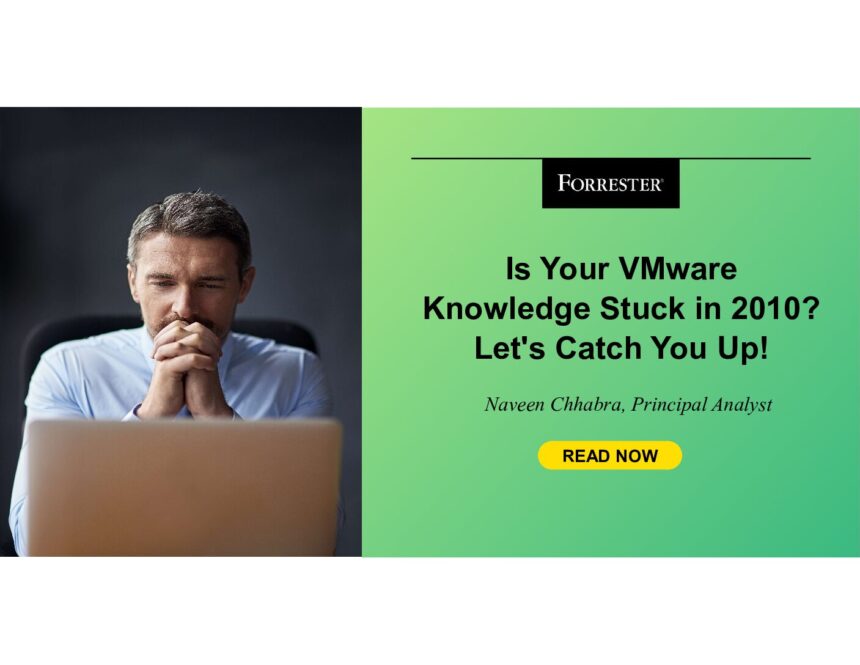VMware Has Evolved
Over the years, most of the Fortune 5000 have standardized on VMware technologies. However, once Broadcom announced its intent to acquire VMware, many of the tech leaders at these firms, concerned with the acquisition, began exploring options. Based on Broadcom’s history with prior acquisitions, tech leaders should develop strategies to minimize future risk. Forrester predicted that 20% of large VMware enterprise clients will begin to leave the VMware stack in 2024. I clearly see that happening already. In fact, Broadcom/VMware has implemented changes that we didn’t anticipate – changes that are disrupting and alienating clients including:
- Multiple times cost increases. VMware has shocked the tech execs with significant price increases. It impacts all organizations but there are some like non-profits, education, and government agencies that are simply unable to budget for these price increases.
- New product packaging and bundling. Tech leaders that are going through refresh and renewals are realizing that VMware’s new packaging is one major reason behind price hikes. VMware has condensed all products into 2 bundles. Even if you use one product, you must pay for the bundle.
- Forced shift to subscription-based pricing. Tech executives understand that subscription-based model makes financial sense for Broadcom; but are not necessarily convinced that this change favors them.
- Shuffled partner ecosystem. Broadcom has reshuffled the reseller and hosted cloud provider partners ecosystem . Most VMware partners, though invited to the Broadcom’s partner program, don’t qualify. Your trusted VMware partners can no longer resell VMware products. If you want to continue to use VMware, your procurement group must find new partners.
Your Next Steps Should Be
Client inquiries about VMware have skyrocketed. To answer many of their questions, I published a new report Map Out Your VMware Options, Post-Broadcom that helps tech leaders understand what VMware changes mean to them and how to navigate the VMware situation post-Broadcom. At a high-level, here are three things that tech leaders should consider:
- Assess your VMware exposure. This is the foundational step. Collect details about the VMware licenses you procured in the past. It is easier said than done as different teams – server, storage, network, security, cloud – buy different products for their needs at different moments. Discover installations — production and nonproduction – to know what you are using and how much.
- Map your existing licenses to new license bundles. Based on the licenses you have procured and the current usage to the new license package. VMware sells few non-core products (like NSX load balancer, Tanzu) as an add-ons and does not include them as part of the package. For ex: Aria cloud cost management is an add-on to VMware Cloud Foundation.
- Assess the usefulness of the bundle and its components. To assess the new license model, identify whether you’re using all products, all licenses in the bundle. Find opportunities to optimize license and softwares in use.
These are the first steps that will help you in deciding whether or not you should explore VMware alternatives. If you decide to, you should assess alternatives for each product and migrate away from all products in the package. As using any one product means paying for the package.
As always, I’m here to help. If you’re a Forrester client, request a guidance session with me to review your current state, future plans, and overall strategy.
Related research:
2024: Bittersweet Beginning For Future Of Subscription Hardware (forrester.com)
Top 10 Trends In Infrastructure | Forrester
Modernize With Cloud And New Computing Architectures | Forrester
Predictions 2024: Technology Infrastructure | Forrester








